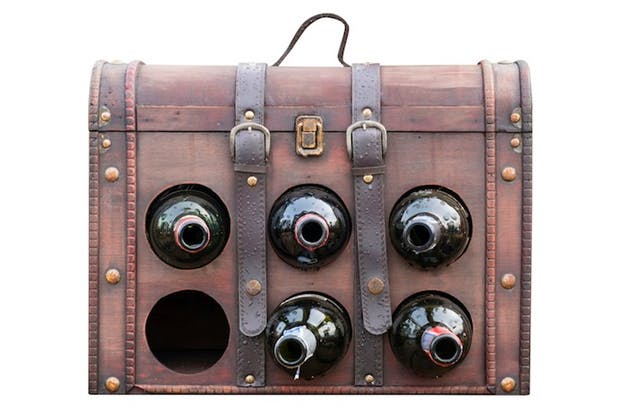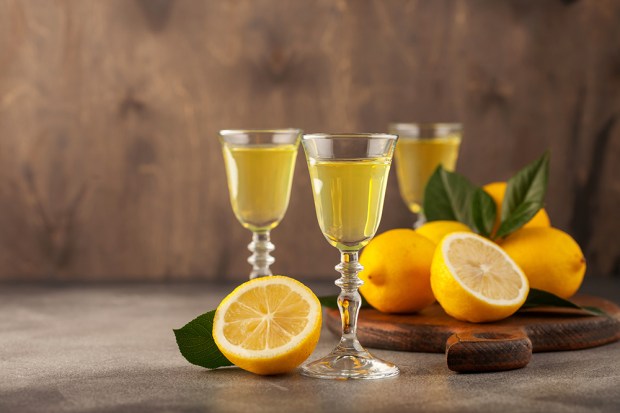I was praying for a miracle, but it seemed unlikely. There had been one already: the bottle’s very survival. A second would qualify it for sainthood.
It was an extraordinary story, almost on the scale of The Hare with Amber Eyes. Towards the end of the Napoleonic wars, a barrel of Imperial Tokay was dispatched from Trieste to St James’s St, where it was bottled by Berry Bros, in 1811. From there, a bottle went to St Petersburg, where it rested for more than a century in a well-appointed cellar. In 1917, it ought to have been delicious. Imperial Tokay is an immensely long-lived wine, well capable of making a century. But its possessors forgot the Russian grand duke’s dictum: between the revolution and the firing squad, there is always time for a bottle of champagne. Tokay would be an admirable substitute.
The owners fled south, to join White Russians fighting the Bolsheviks. After appalling privations, they lost. But some of them escaped, possibly via Baku on the Black Sea. During all those travails, someone preserved the Tokay in their luggage. Goodness knows why. Amid the bitter waters of defeat, it might have been a comfort. Perhaps it became a talisman. It would be drunk one day, when justice was done and evil overthrown. Until then, it would serve as a memory of a lost life: a symbol of a blighted world.
From Baku or wherever, family members reached Shanghai, still with the bottle. It was not easy to be a White Russian exile. Hauts bourgeois became taxi drivers. Some ladies sold their jewellery. For others’ sales, see Sonia in Crime and Punishment. It was said of female White Russians that they dressed on credit and undressed for hard cash. Yet the bottle survived.
Its owners cannot have been among the brokest of the broke, because they had a Chinese servant. In the early 1940s, fleeing from the Japanese or the Maoists or both, they abandoned Shanghai and left a few belongings behind, including the bottle of Tokay. They may have hoped to return; they may just have overlooked it. There was no return, and their former servant had the bottle when he arrived in Hong Kong, also fleeing, also penniless.
Hard work in a free economy put that right. His grandson is seriously rich and thoroughly cultivated. Determined to rebut the notion that the Chinese are only interested in Lafite from auspicious years, he has sought my advice on wine, and I have responded by sending him to those who really know their stuff. It was the Chinese mid-autumn celebration: as my friend put it, our harvest festival. I was invited, and not only for mooncakes. We were to taste the fruits of earlier harvests: from vineyards. He told me about the Tokay and would not be dissuaded from opening it.
I prayed for a miracle, but am not in good standing with the Almighty. Reason prevailed. The taste: exactly what you would expect from a 200-year-old wine which had spent several decades as a refugee. It was dead. There was a stale nose and it looked muddy in the glass. I let some brush my lips and I think that there was a hint of ghostly honey. But it was gone. Reviving it would have required a second Miracle at Cana.
Pensively, we considered the grandeurs of the 19th century: the stability, the growth of civilisation and prosperity, the harmonious circumstances which made possible that wine’s happy evolution. Then we mused on to the horrors of the 20th century. It may be that those long-dead Russians who had preserved the bottle were trying to convey a message for posterity. I asked my friend why his grandfather had held on to the bottle: he regretted his failure to press the same question before the old boy died. Expressing anxiety as to whether it too would have faded, he then produced another wine, a Clos Vougeot 2000, Domaine René Engel. That deserves a column to itself, which it shall receive.
Got something to add? Join the discussion and comment below.
Get 10 issues for just $10
Subscribe to The Spectator Australia today for the next 10 magazine issues, plus full online access, for just $10.















Comments
Don't miss out
Join the conversation with other Spectator Australia readers. Subscribe to leave a comment.
SUBSCRIBEAlready a subscriber? Log in